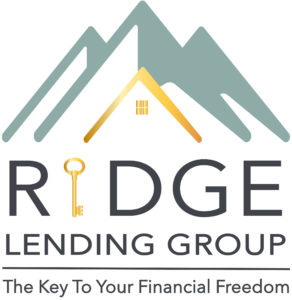As cities continue to evolve and adapt to the changing lifestyles of residents and businesses, mixed-use developments are becoming a cornerstone of modern urban planning. These developments, which integrate residential, commercial, and sometimes industrial spaces into one cohesive unit, offer a unique and increasingly popular investment opportunity. For savvy investors, understanding the market drivers, financial advantages, and potential challenges of mixed-use properties is crucial to capitalizing on this trend.
Market Drivers: Why Mixed-Use Developments Are So Hot Right Now
The rise of mixed-use developments is driven largely by demographic and cultural shifts. Younger generations, including millennials and Gen Z, are prioritizing convenience, walkability, and access to amenities, which mixed-use developments deliver in spades. Instead of enduring long commutes and separate zones for living, working, and leisure, these developments allow people to enjoy all of these aspects within one space. As a result, cities like New York and Miami have seen a boom in such projects, with areas like Hudson Yards and Brickell City Centre becoming prime examples of this trend’s success (US Real Estate Insider) (J.P. Morgan | Official Website).
Walkable communities, a key feature of mixed-use developments, are especially attractive in urban centers, where reducing reliance on cars is seen as both an economic and environmental benefit. Not to mention, these pedestrian-friendly environments promote healthier lifestyles and foster a stronger sense of community (US Real Estate Insider).
Financial Advantages: A Winning Formula for Investors
Mixed-use developments are more than just a trend—they offer real financial advantages that make them highly attractive to investors. One of the most significant benefits is the diversification of revenue streams. By blending residential units with retail spaces, office buildings, or entertainment venues, investors can mitigate the risks associated with market downturns in one sector. For example, if retail is struggling, strong residential occupancy can help offset any losses, making mixed-use properties a relatively stable investment (J.P. Morgan | Official Website).
Moreover, mixed-use developments often benefit from enhanced property values over time. These projects tend to revitalize entire neighborhoods, attracting businesses, residents, and tourists alike. As the area becomes more desirable, property values rise, providing long-term appreciation for investors. A study on developments like Miami’s Brickell City Centre shows how these projects have driven significant property value increases in their respective regions (J.P. Morgan | Official Website).
Development Challenges: Navigating Complex Terrain
While the rewards of mixed-use developments are tempting, the path to successful execution can be fraught with challenges. One of the most common hurdles developers face is navigating zoning laws. Mixed-use projects often require special zoning permissions, as they blend various functions like residential, retail, and office spaces, which may not always align with a city’s existing zoning regulations (US Real Estate Insider).
Financing can also be tricky. Unlike more traditional real estate ventures, mixed-use developments require more complex financing structures due to their multi-purpose nature. Investors may need to secure funding from multiple sources or work with lenders experienced in handling these intricate projects. Given these challenges, developers should ensure they have a solid plan in place and consult with experts to navigate local regulations and financial intricacies (J.P. Morgan | Official Website).
Success Stories: When Mixed-Use Developments Thrive
There are several success stories that showcase the transformative power of mixed-use developments. Take New York City’s Hudson Yards, for example. This ambitious project took a previously underutilized area on Manhattan’s west side and transformed it into a bustling hub filled with luxury apartments, office spaces, retail stores, and cultural attractions. The result? A revitalized neighborhood that continues to attract both residents and businesses, boosting the local economy and real estate values (US Real Estate Insider).
In Miami, the Brickell City Centre has similarly revitalized the financial district, blending residential towers, office spaces, and retail outlets into one cohesive development. This project not only increased property values but also attracted a new demographic of professionals and international buyers to the area (J.P. Morgan | Official Website).
Investment Outlook: A Bright Future for Mixed-Use Developments
Looking ahead, the demand for mixed-use developments shows no signs of slowing. As urbanization continues and the preference for convenience and community-centric living grows, these projects will remain a key element of the real estate landscape. Investors who can navigate the regulatory challenges and embrace the long-term potential of mixed-use developments will likely see significant rewards in the years to come.
Conclusion: Seize the Opportunity
Mixed-use developments are more than just a trend—they’re the future of urban living. With their blend of residential, commercial, and recreational spaces, these developments meet the evolving needs of today’s city dwellers while offering investors diversified revenue streams and long-term property appreciation.
If you’re ready to explore the world of mixed-use development or expand your real estate portfolio, Ridge Lending Group is here to help. With our expert guidance and tailored financing solutions, we can assist you in making the most of these opportunities. Visit RidgeLendingGroup.com or call us at 1-855-747-4343 to start your application today. Let’s make your next investment a success!
Sources:
- “2024 Trends in US Mixed-Use Properties” – US Real Estate Insider (US Real Estate Insider)
- “The Growing Popularity of Mixed-Use Properties” – J.P. Morgan (J.P. Morgan | Official Website)


